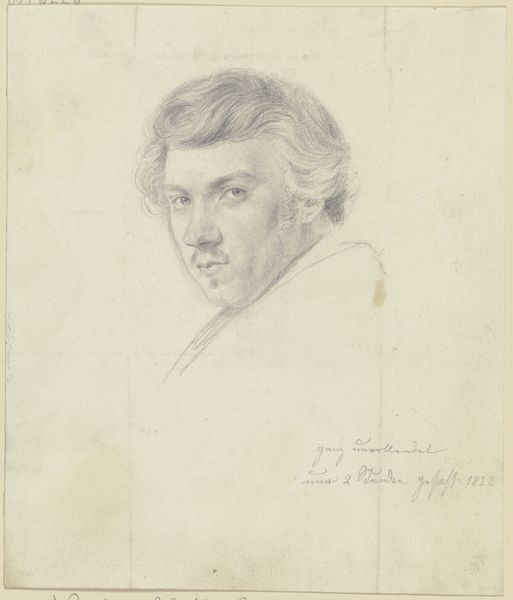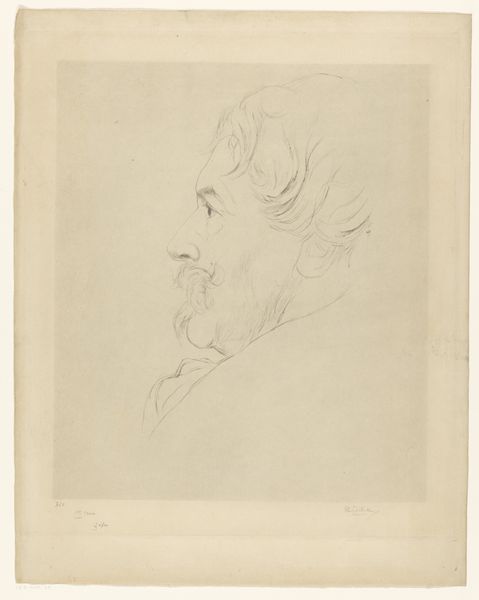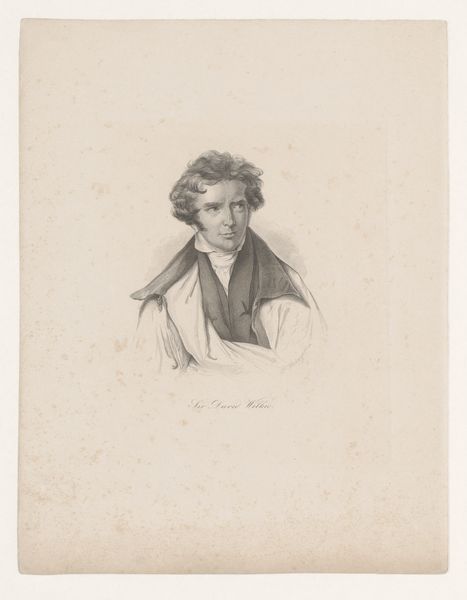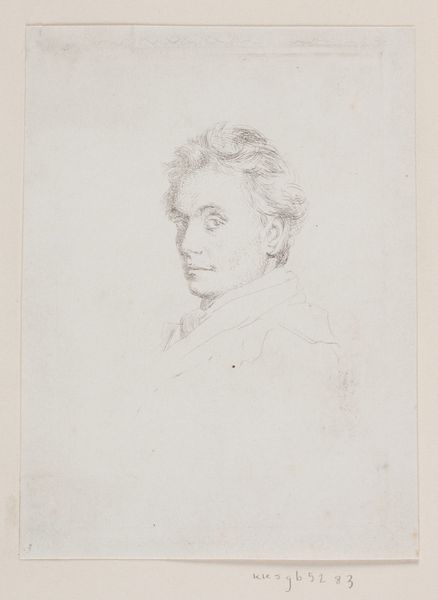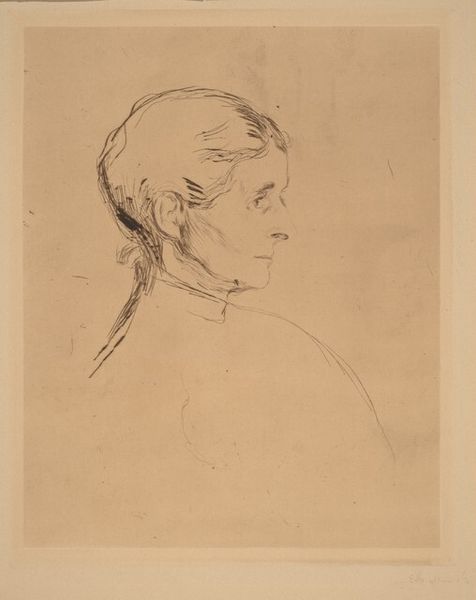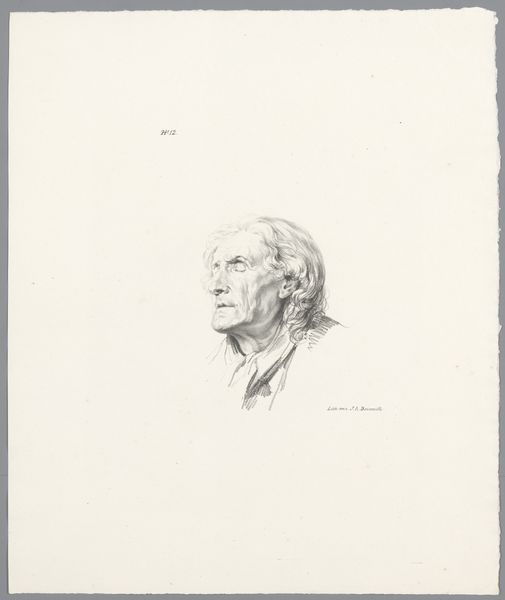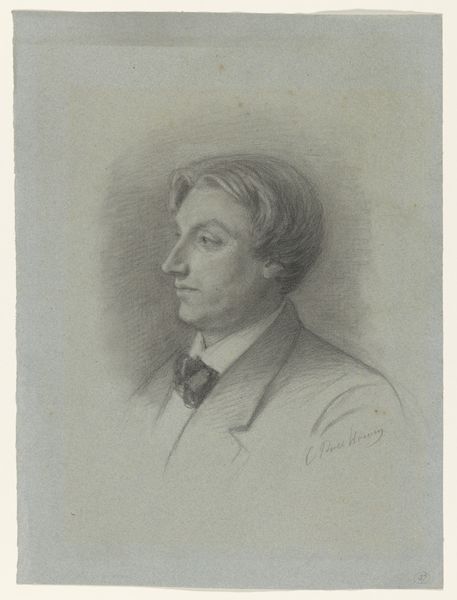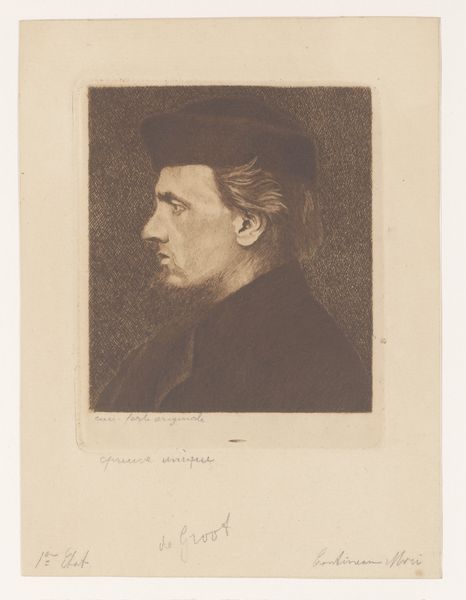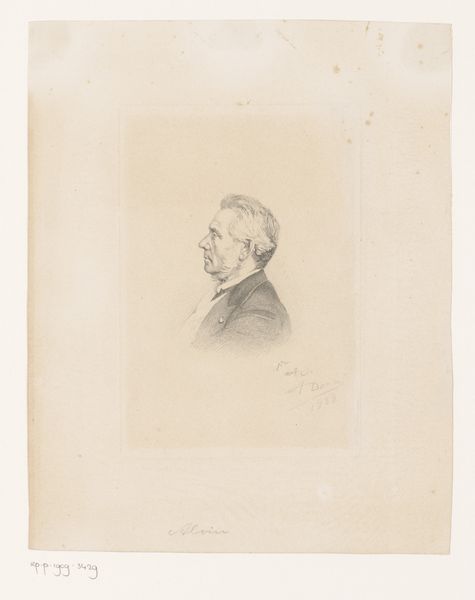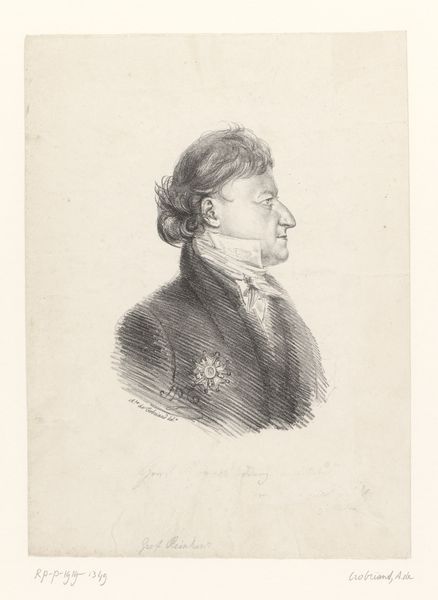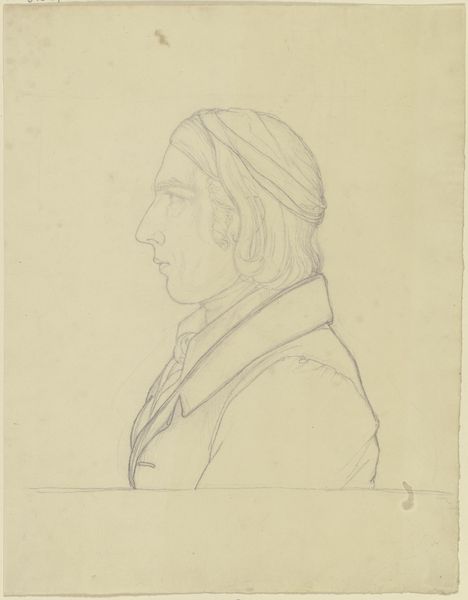
drawing, pencil
#
portrait
#
pencil drawn
#
drawing
#
pencil drawing
#
romanticism
#
pencil
#
portrait drawing
Copyright: Public Domain
Editor: Here we have Leopold von Bode’s 1822 pencil drawing, "Portrait of Nikolaus Hoff". There's an undeniable directness in Hoff’s gaze; he looks almost wary. How do you read this work? Curator: It’s fascinating to consider this drawing within the burgeoning bourgeois society of the early 19th century. Portraits, even in humble pencil, became crucial tools for social positioning. Consider the gaze: does it challenge, or is it a performance of Romantic introspection intended for public consumption? Editor: A performance? That’s an interesting way to put it. Do you mean Hoff is intentionally crafting an image? Curator: Absolutely. These portraits weren't just about capturing a likeness; they were about constructing an identity, and that identity had to resonate with a specific social sphere. The rise of portraiture was tied to an individual’s ability to circulate that image, embedding themselves within social networks and solidifying their place in the public consciousness. Look at how von Bode has rendered the sitter’s hair and clothing; even the medium, pencil, speaks to a certain level of accessible affluence. It suggests a cultured, intellectual pursuit rather than ostentatious display. Editor: So, even a seemingly simple portrait becomes a complex statement about social aspiration and public image. I never would have considered the pencil medium that way before. Curator: Exactly! The art world is interwoven with the socio-political landscape. Examining how art is produced, distributed, and consumed gives us a rich understanding of its function within society. Editor: It's amazing how much context changes everything. I'll definitely look at portraits differently from now on!
Comments
No comments
Be the first to comment and join the conversation on the ultimate creative platform.
